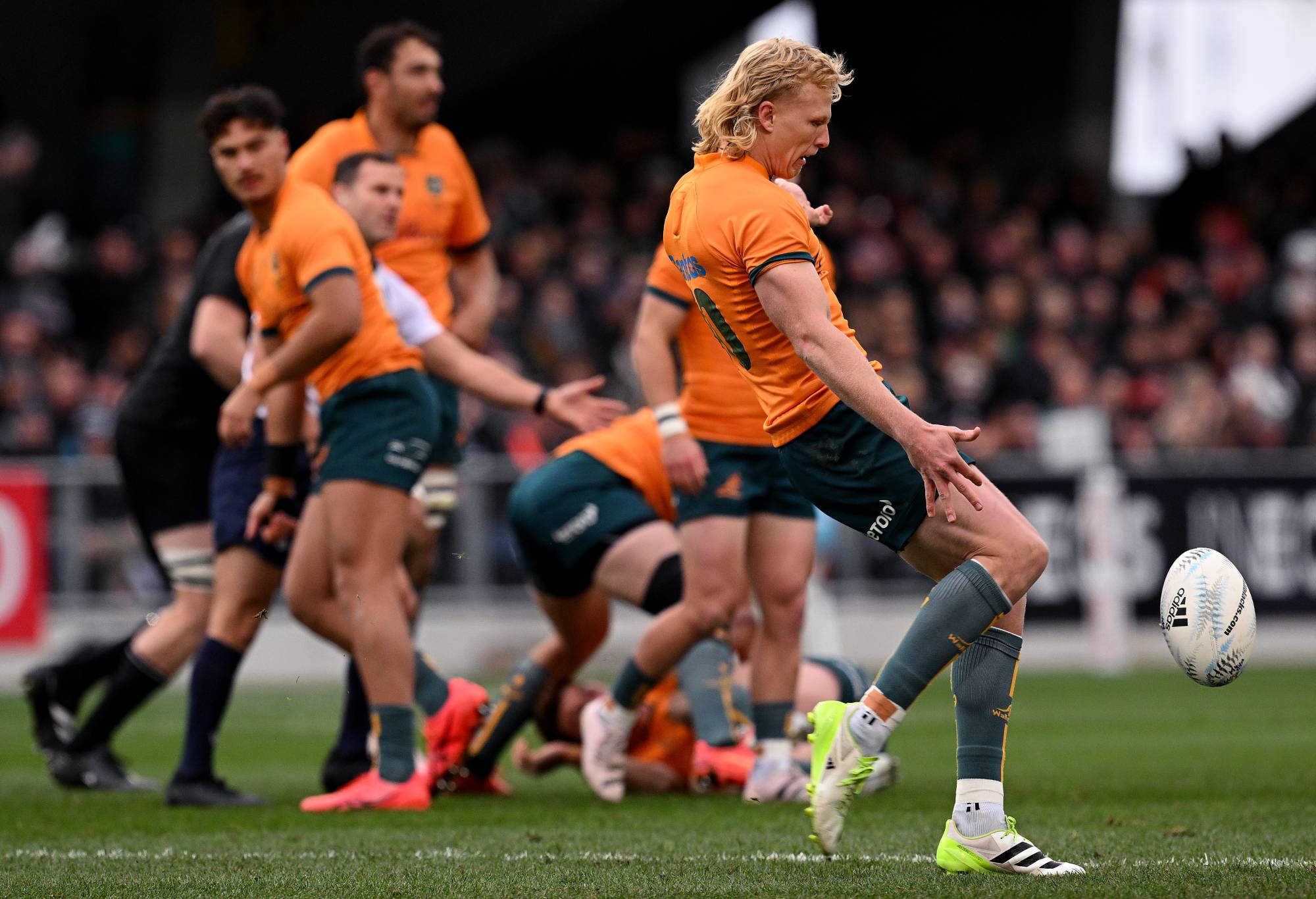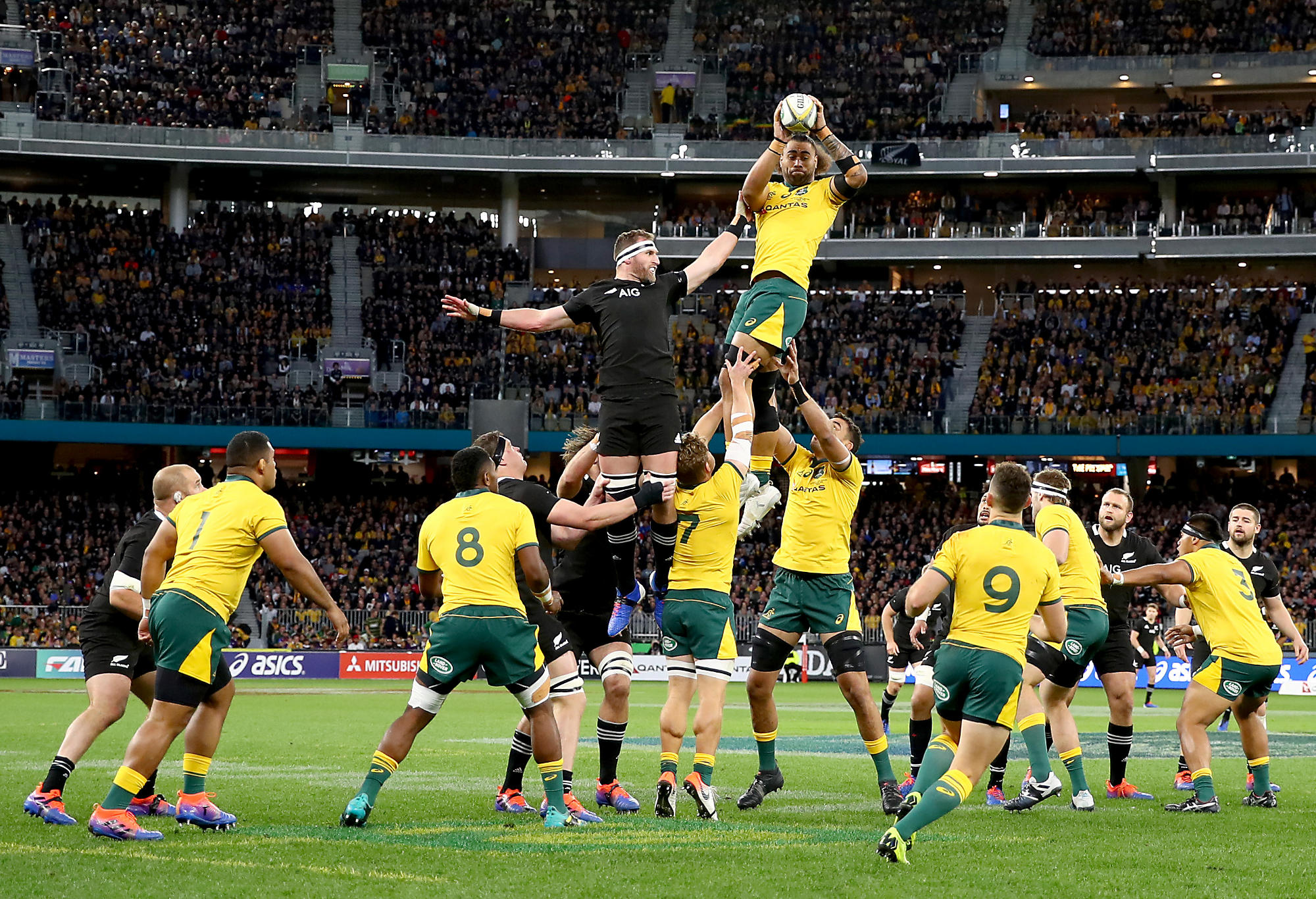'Run-on debut like no other': Junior Wallabies flyer announces himself to the world after stunning hat-trick
In 15 minutes, Tim Ryan didn’t just put a smile on Joe Schmidt’s face, he announced himself to the Australian public by scoring a…

International rugby tactics are like fast fashion. Things that are trendy in the Six Nations winter are outdated by the Autumn internationals.
Kicking plans, backline moves and pod positionings are used and discarded before most fans can even notice let alone understand what has happened. The Rugby World Cup is the greatest fashion show of them all as coaches show off their muses, and in the physical brutality of a rugby game, years of planning are revealed.
Last RWC we all watched in awe as an English team dismantled the All Blacks rush defence to dethrone the kings. Four years earlier we saw the Brighton Miracle, the greatest upset in rugby history as Japan created a game played too quickly for South Africa to keep up. The performances that define World Cups are so often attributed to heart and willpower — which they are — but underneath them is years of planning that can be harder to spot.
In this way, coaches have to combine years of preparation with the latest tactical trends to compete for the winning edge. The job for Eddie Jones is even more difficult as he attempts to emulate a World Cup cycle’s preparation in seven months. Australia’s results have suffered as new systems take time to work. Australia’s attack in the past five matches has looked less like a well-oiled machine and more like the result of button-smashing by someone figuring out video game mechanics.
Though, after a set of poor results, the Wallabies might have figured out how they want to attack and could model Eddie Jones’ greatest fashion statement yet. Just like in fashion, all trends come around again. In the case of Eddie’s tactics, there is inspiration for his work: the vintage, the knock-off, and the classic.
The Vintage: Up and Under
Eddie Jones has made it clear from the beginning of his Australian tenure his desire to kick the ball. One part of this kicking plan is not a defensive strategy but an ode to a more impulsive attacking time. The cross-field bomb has made a comeback — though not yet with the desired results. But as kicking accuracy improves, these up-and-unders will become more dangerous with defending wingers pushed back through better overall kicking.
Australia’s wingers are probably the strongest position group in the squad with Marika Koroibete and Mark Nawaqanitawase being two of the best in the world, along with a promising Suliasi Vunivalu. With more practice, Carter Gordon’s ability to execute and identify when to use this move will improve Australia’s territory dominance and success.

Carter Gordon of Australia kicks the ball. (Photo by Joe Allison/Getty Images)
The Knock-off: Huwipulotu
The ‘Huwipulotu’ shape has been Scotland’s go-to strike move to score points.
(See the latest Squidge Rugby video on Scotland for more)
Essentially, the inside centre becomes the first receiver late with multiple options then threatening the defence. Deception is created through its simplicity, with a powerful inside centre acting as the uncharacteristic ballplayer.
Across the international warm-ups this set piece has been adopted by many teams, although few have been more devout in their emulation than Australia. It was used five times in Bledisloe 2 and four times off lineouts against France.
Interestingly Australia has simply repeated the same option for an entire match so far with the Samu Kerevi crash used against New Zealand and then the ball to Gordon out the back against France. We have not yet seen the most potent lines, the short ball to an outside centre or winger. Eddie Jones is known for saving moves for big games and this one seems to promise there’s more in store.
The Classic: Lineout Blind Side
The final attacking play that is coming along for the Wallabies is Eddie Jones’ most well-known creation: the three-phase set move. A Jones classic, he developed it during his time at the Brumbies and then refreshed it with Japan. More recently, he used bespoke move variations to devastating effect to knock New Zealand out of the 2019 World Cup with England.
In 2023, the Wallabies seem to have uncovered the latest weak point in defences around the world: location of a lineout. In the past two matches Australia have been trying to target this off five-man lineouts. Against New Zealand in Bledisloe 2, the Wallabies ran on multiple occasions the same ‘21’ play, with a carry of the lineout, followed by a pod off halfback, before switching directions to the flyhalf going down the blindside with a shortened backline. This evolved against France with an ‘11’ play used multiple times with a maul into a carry, then a switch to the blindside, this time with a cut-out ball to a forward pod carrying and the option of a pass to a winger.

The Wallabies soaring high. (Photo by Cameron Spencer/Getty Images)
There are two possible outcomes from the Wallabies using this move so frequently in the build-up to the World Cup. Firstly, they could be testing which is more effective before creating more specific plans than just a carry down the blindside. Alternatively (and more likely), this ‘11’ move will aim at either a front foot kick or a switch to the opposite wing on the third phase, potentially adding the ‘Huwipulotu’ structure to get the ball wide.
With rugby’s marquee international event just days away, teams and coaches will be impatient to showcase four years of planning and design. In rugby’s fashion show, Eddie Jones is the most original of creators, and with a reputation to uphold, he might yet have some designs to shock the rugby world.